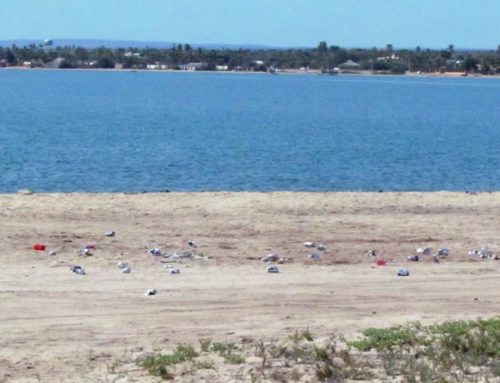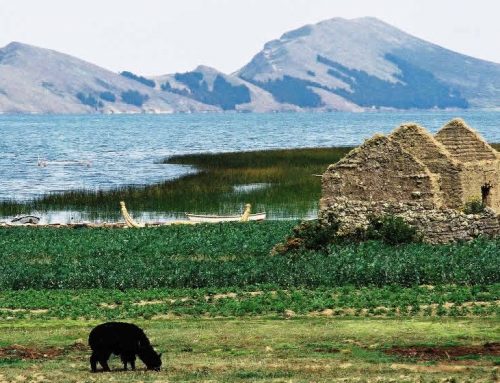Day breaks over a cloudless sky – we couldn’t have asked for better weather. We had seen Southern Right Whales breaching in Hermanus, and are hoping to see another one of the ocean’s great creatures. We take the shuttle to the skipper’s house in Gaansbai, where breakfast and the boat are waiting. Shortly afterwards, we reach Dyer Island – home to a colony of Cape Fur Seals. These creatures are a staple in the diet of many Great White Sharks, and the strip of water between Geyser Rock and Dyer Island is appropriately named “Shark Alley”.
Myths and Misconceptions
Great White Shark cage diving is very controversial around the world, and is banned in the United States. Mexico, Australia and South Africa, on the other hand, recognize its benefits by allowing visitors to enter the realm of this apex predator. The most obvious economic benefit is an increase in tourism revenue.
More importantly, for the sharks, is when myths and misconceptions perpetuated by a sensationalist media and film industry are dispelled. Films like Jaws, and the cinematically deficient Deep Blue Sea, Open Water, 47 Meters Down, The Reef and The Shallows do not help invoke pity from the general public for these beautiful creatures.

A Cape Fur Seal colony lives on Dyer Island
Shark sport-fishing and derbies along North America’s Atlantic coast target the biggest fish and dilute the gene pool. Shark-tagging derbies are much more effective and less destructive research efforts. Commercial fishing depletes prey stock and results in wasteful by-catch. This plays an even greater role in reducing the already dwindling number of sharks in the ocean.
Chinese medicine prescribes shark fin as an aphrodisiac, and affluent Chinese palates pay top-dollar for shark fin soup. As a result, the shark fin industry is as lucrative as it is inhumane. Sharks are caught, their fins are cut off, and the fish are tossed back into the sea – often still alive. This is the result of human greed, vanity and gluttony. The tourist demand for jaws and teeth further encourages a shark black market.
Cage Diving Controversy
At the heart of the cage diving controversy lies the notion that such operations encourage sharks to associate humans with food. Anecdotal reports indicate that Oceanic White-Tip Sharks will approach a fishing boat when it senses the motors have geared down – an indication that a fish has been caught and is available for a meal.

Great White Shark
Cage diving boats go to Great White Sharks’ natural feeding grounds (ie. a seal colony), and a human encased in a metal cage is hardly a recipe for positive reinforcement. Evidence supports the theory that Great White Sharks are nomadic and do not frequent an area for more than a few days before moving on. A few cage diving boats chumming for sharks aren’t going to make much of a difference in a region where thousands of fishing boats have been tossing fish guts into the water for centuries.
Having evolved to their present state millions of years ago, they are one of Nature’s perfect predators. And, the presence of apex predators in any food chain indicates a healthy ecosystem. Observing Great White Sharks in their natural habitat helps quell fears and promote understanding, and most of the shark diving operators conduct shark conservation research on these little understood animals without killing them.
Ran Into a Chum
Our first shark appears five minutes after setting our chum line. The cage is dropped in the water and, since we may not see another shark for the rest of the day, we volunteer to be the first ones in. As the shark splashes around the surface, Diane hesitantly enters the cage and I follow her. At 14 feet, this is no baby. It passes several times within a few feet of the cage, seeming to eye us curiously.
A chum line of fish blood is set to attract the animals towards the boat. Bait – usually a tuna head – is used to draw the sharks closer to the boat and cage. Every effort is made to NOT feed the fish but, once in a while, a shark will sneak up behind the bait-handler and get hold of the bait.

A Great White Shark takes the bait and dives for the depths
Suddenly, our shark gets hold of the tuna head and begins thrashing about. Its tail knocks the cage and, with the bait in its mouth, we get a good look at those razor-sharp pearly-whites. As it dives, the rope attached to the bait wraps around the cage, tilting and tipping us until much of the open top of the cage is exposed to the open sea.
“You’re gonna need a bigger boat.”
– Chief Martin Brody (Jaws)
Thankfully, the shark lets go of the bait, and we are not spilled into the Atlantic Ocean. As we climb out of the cage, more sharks arrive on the scene, making our exit from the water even more exciting than our entry. We spend the rest of the day onboard while the rest of the group takes turns being thrilled by these magnificent creatures.

We prefer to see our wildlife with us in the cage
On our way back to Gaansbai, we remain awestruck by our encounter with these graceful and majestic animals. An unforgettable experience of a lifetime that leaves us with a greater respect, understanding and admiration for these awesome kings and queens of the sea.











Leave A Comment